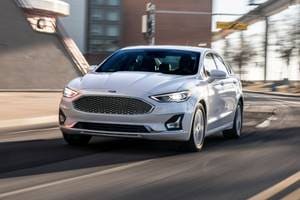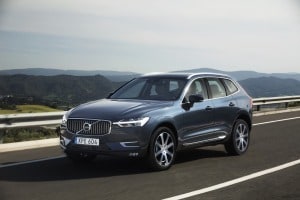Do Consumers Really Want Electric Cars?

Sales of hybrids and electric-drive vehicles plummeted in January, following a "strong" finish to 2011. Electric-drive vehicles, including electric vehicles (EVs) and plug-in hybrid electric vehicles (PHEVs), lost 30 percent of their (admittedly small) market share, while the market share for hybrids fell 7 percent, even as Toyota Prius supply continued to recover. Amidst these lackluster sales results, a growing chorus of voices is predicting a glowing future for these advanced-drive vehicles, with market shares at 20 percent or higher by the end of the decade. For a segment that has struggled unsuccessfully to achieve even a 3 percent market share over the past decade, and that would barely reach 7 percent by 2017 on the current growth path, these forecasts seem to be wishful thinking at best.
Limited supply and variety have constrained EV/PHEV sales growth to date. But, with over 30 models offered last year, the same cannot be said about hybrids, raising the question of why consumer preferences will change so dramatically in favor of advanced-drive vehicles in the near future. Several commonly assumed demand drivers — gas prices, net fuel cost savings and Gen Y's affinity for living green — could fail to deliver. Similarly, the government's Corporate Average Fuel Economy program (CAFE) that requires automakers to build more fuel-efficient vehicles and specifically incentivizes advanced-drive vehicles is not guaranteed to persuade consumers to buy these vehicles simply because they are available. As the saying goes, you can lead a horse to water, but you can't make him drink.
Evaluating Reasons To Buy Advanced-Drive Cars
- Gas Prices: Gas prices, along with a fear of the ability of foreign oil producers to raise prices, have long been considered a key driver of hybrid and electric-drive sales, especially when gas prices are rising rapidly. Yet, advanced-drive vehicles have accounted for more than 3 percent of sales in only four months to date (and these highs were during periods of anomalous conditions — the gas crisis in Spring 2008 and Cash for Clunkers during Summer 2009). What's more, for these and other periods of high gas prices, demand for fuel-efficient vehicles, including advanced-drive vehicles, weakened as soon as gas prices stabilized or dropped.
Gas prices can be hard to predict, given the political factors that affect the price of oil. Some analysts believe that gas prices will have to increase, given growing demand from emerging markets and the expected inflationary effect of the current practice by many government of printing money to spur growth. Government forecasts of gas prices during the rest of the decade show stable prices for 2012 and 2013, after which point prices will slowly increase, reaching $4.47 per gallon annually in 2020 (just $3.76 when adjusted for inflation!). Such slow increases tend to support slower increases in demand for advanced-drive vehicles as well. In fact, Edmunds.com analysis of consumer buying habits has shown that gas prices will need to reach at least $8 to $10 per gallon before fuel economy becomes a top factor in automobile purchases. Also, the supply of oil is not fixed as recent discoveries in the U.S. and elsewhere have proven. Forecasts of rising global demand for fuel could spur further discoveries, thereby driving gas prices (and demand for advanced-drive vehicles) downward. Barring unexpected events, gas prices are unlikely to provide a strong or consistent motivator for consumers to buy advanced-drive vehicles.

- Net Fuel Cost Savings: The recently proposed CAFE standards rely on a slightly different factor than gas prices to raise advanced-drive vehicle sales: achieving enough savings in fuel costs to more than cover the higher purchase prices of these vehicles. For a given consumer, though, achieving these savings on any given vehicle depends critically on a variety of factors to be as assumed in the proposed rulemaking: vehicle pricing, consumer driving habits, length of vehicle ownership by the initial owner, gas prices, to name a few. For example, the proposed rulemaking considers the entire lifetime of a vehicle when calculating net fuel cost savings, yet most car owners currently keep their vehicles five to six years — not long enough for fuel cost savings to cancel out the higher cost of many advanced-drive vehicles.
In any case, the mere fact of net savings may not be enough to persuade many consumers to purchase an advanced-drive vehicle. For most consumers, there is no car that is a perfect substitute for another car. Even if a consumer does save more on fuel costs than the increased cost of the car payment, insurance and taxes on a given car, cost is just one part of the buying equation and a consumer may be willing to pay more for a different, less fuel-efficient vehicle that better meets his needs overall. - Gen Y Preferences: An inherent assumption in the growth of advanced-drive vehicle market share is that consumer demand for these vehicles will increase due to the growing numbers of green-loving Gen Y buyers in the marketplace. This assumption overlooks certain economic realities. For starters, there is no guarantee that demand will be stable even from current advanced-drive vehicle owners. Case in point: over the past two years, roughly 40 percent of Prius drivers who traded in their cars did not buy another advanced-drive vehicle. In addition, it is even unclear to what extent consumers, including Gen Y consumers, really demand fuel economy in general, and advanced-drive vehicles in particular. While consumers may profess to desire fuel economy when surveyed, actual purchases tell a different story, namely that utility and comfort play the top roles in determining what a consumer will buy and that fuel economy typically falls into the second tier of factors considered. In fact, despite the tendency to associate advanced-drive vehicles with younger, hip drivers, owners of these cars tend to be older than the average car owner — and certainly older than Gen Y members.
While market research, such as a 2010 survey by Deloitte, has found that Gen Y places a higher value on the environmental impact of their cars than its predecessor generations, the ability of Gen Y to demonstrate this preference in the marketplace has been hindered by high unemployment and slow income growth. How quickly these effects of the 2007 recession abate depends on the pace of the recovery, which has been sluggish at best. In addition, some studies have shown that coming of employment age during a recession can lower earnings by hundreds of dollars per month for a person's entire career, raising the question of whether more expensive advanced-drive vehicles will ever have a predominant place in Gen Y's future purchases.
If you build it, they will come — or will they?
Even assuming none of the above factors leads to strong increases in consumer demand for advanced-drive vehicles, the question arises as to whether automakers will build so many advanced-drive vehicles to meet the new CAFE standards that eventually consumers will buy more of these vehicles simply because they have fewer non-advanced-drive choices. An expanded selection of advanced-drive vehicles should attract additional consumers whose needs were not adequately met by the previous offerings. But, with fuel efficiency increasing in traditional gasoline-powered vehicles, other consumers will be less tempted to purchase a (typically) higher-priced advanced-drive vehicle. For EVs/PHEVs in particular, certain obstacles will need to be overcome before sales increase, including consumer unease with unfamiliar technology and the lack of an adequate recharging infrastructure. Given these issues, assuming that supply will generate the demand growth forecasted seems risky in this case. Besides, consumers will continue to have other options than buying more expensive new vehicles, including buying used cars and delaying new vehicle purchases.
Lacey Plache is the Chief Economist for Edmunds.com. Follow @AutoEconomist on Twitter.
















